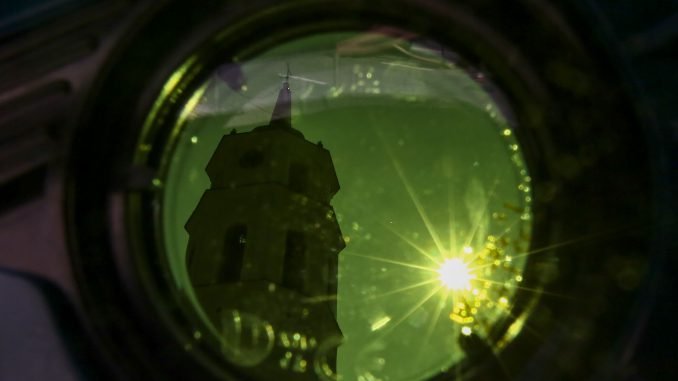
In less than 60 years, scientists predict that Vilnius will have a climate similar to that of the Serbian city of Surcin. Although this is only a projection of the future, climatologists note that Lithuania is already experiencing the same weather conditions as Central Europe did 30 years ago, Toma Andrulytė states in tv.3.lt.
Matthew Fitzpatrick, a spatial ecologist at the University of Maryland in the US, created an interactive map showing the climate in different cities worldwide in 2080. The projections are based on five climate calculation models.
The map offers two scenarios – a worse scenario and a more positive one. In one scenario, we do nothing to reduce the greenhouse gases that drive climate change, so emissions remain as high as they are now. In the other case, we reduce emissions to a level similar to that of the Paris Agreement on climate change.
Under this agreement, all European Union (EU) countries have agreed to make the EU the first climate-neutral economy and society by 2050. At the end of 2023, the EU decided to take action to reduce global greenhouse gas emissions by 43% by 2030 and 60% by 2035.
We will live like in Serbia or Romania
In a negative scenario, Vilnius’s climate in 2080 could be that of Surcin in Serbia. Summers in our capital are projected to be 5.7 degrees warmer and 3.6% drier than the standard climate norm. Winters are predicted to be 6.5 degrees warmer and 23.1% wetter than normal.
If we were to reduce greenhouse gas emissions, Vilnius would have a climate similar to that of Satu Mare in Romania. Summers are likely to be 1.8 degrees warmer and 9.3% wetter than normal, and winters would be 2.5 degrees warmer and 9.5% wetter.
If the climate warms unstoppably, the citizens of Kaunas will live like those of Kupinov, Serbia, do now. Summers in Kaunas would be 5.8 degrees warmer and 4.5% drier than usual. Winters are forecast to be 6.5 degrees warmer and 20.9% wetter than the long-term average.
If the best-case scenario holds, Kaunas would have a climate similar to Satu Mare’s in Romania. Summers are projected to be 2 degrees warmer and 8.3% wetter than usual, and winters are projected to be 2.6 degrees warmer and 7.7% wetter than normal.
Two paths for Klaipėda – to become similar to Greece or Germany
If greenhouse gas emissions are not reduced, Klaipėda’s citizens could live in a port city with a climate reminiscent of Balkan Thrace in 56 years. Summers in Klaipėda would be 5.2 degrees warmer and 6.4% drier than normal, and winters would be 5.7 degrees warmer and 10.8% wetter.
If action is taken to reduce emissions, Klaipėda’s climate in 2080 will be similar to that of the German city of Uberlingen. In this case, summers would be 1.9 degrees warmer and 5.4% wetter than usual. Winters are predicted to be 2.3 degrees warmer and 1.5% wetter.
Currently, the average annual air temperature in Lithuania is 7.4 degrees. July is the warmest month of the year (18.3 degrees), and January is the coldest (-2.9 degrees). The average annual rainfall in Lithuania is 695 mm.
Current conditions are reminiscent of Czechia
We don’t need to look far into the future – the climate has already changed. Climatologists note that Lithuania’s weather is now what it was in central Europe 30 years ago.
“In Lithuania, the average annual temperature in the second half of the last century was around 5-6 degrees, whereas now it is 7-9 degrees. This is a very significant increase in the average annual temperature.
Our climatic conditions have become similar to those of southern Poland and Czechia 30 years ago. So, we are belatedly moving south. Of course, the climate is warming all over Europe,” climatologist Arūnas Bukantis told tv3.lt.
Climatologist Donatas Valiukas points out that the average temperature has risen by 2.3 degrees since the last century, a significant indicator.
“For a human being, one degree at 36.5 normal body temperature means that the person is sick; it shows how he feels, so 2.3 degrees for global processes is a lot,” he compared.
This increase, according to Valiukas, is due to human lifestyle and the burning of fossil fuels.
“Whether it is the uneven distribution of rainfall or stormy weather, in principle, the increase is a consequence of climate change,” the climatologist explained.
However, according to Valiukas, global temperatures would not fall immediately, even if fossil fuel burning and emissions were stopped today.
“Greenhouse gases may still be in the atmosphere for a few dozen years, but they would not disappear because there is a life cycle of different gases, and if we stop polluting today, only after a few dozen years will the air temperature start to fall,” the climatologist said.
However, climatologists believe that just because the process is not happening quickly does not mean anything needs to change.
“Reducing emissions should start as soon as possible and, of course, forests should be planted, not cut down,” Valiukas said, adding that it is not possible to stop the process, but only to mitigate it.


Be the first to comment